Architecture Around the World ............... Sicily
Temple
of Hera
AKA: Temple of Hera Lacinia or Juno
Lacinia
Valley
of the Temples, Agrigento,
Sicily
UNESCO World
Heritage Site
2007 Photos
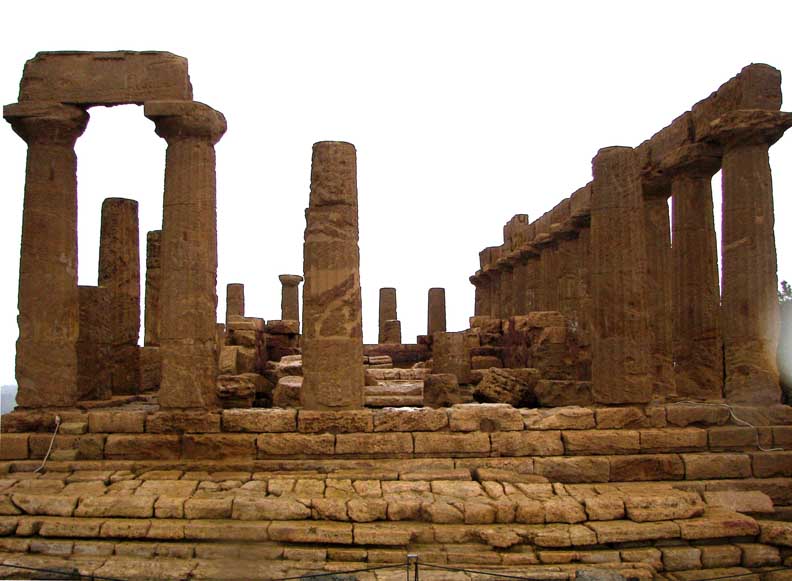 Three levels of steps ... Limestone ... Originally the temples were covered in marble and painted in bright colors, but today only the limestone remains ... 30 columns are standing, but only sixteen with their capitals. 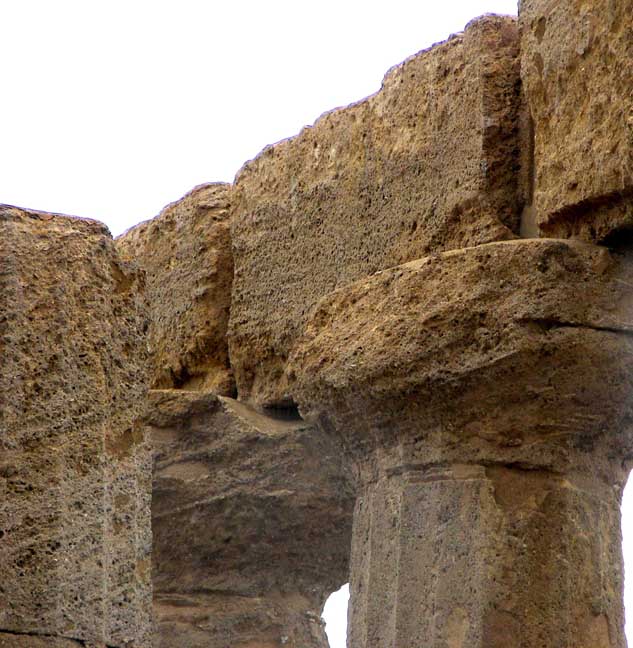 Doric order 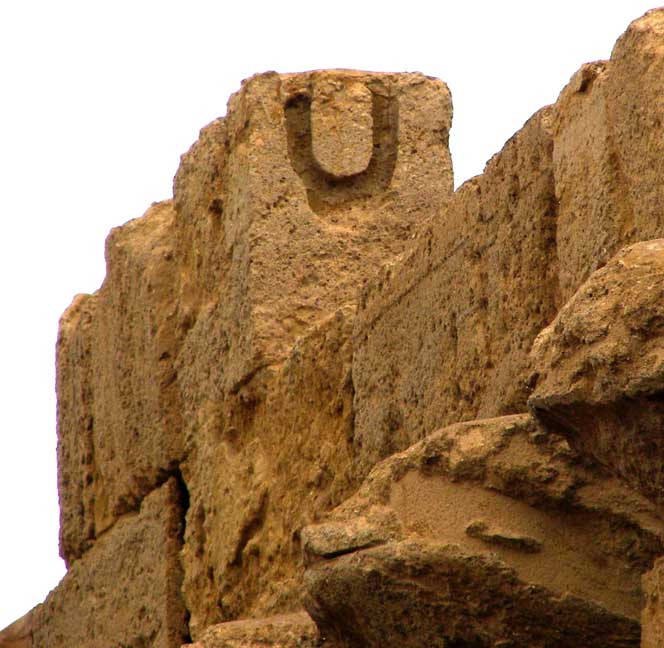 Note chiseled U shape where rope was used to lift large blocks using cranes ... "Archeologists
have uncovered evidence that the Ancient Greeks were the first to
use cranes to lift heavy objects.
They predict that they were first in use in the 6th Century B.C. When
observing various archaeological sites, they noticed that there were
distinct markings that created grooves and holes in some of the
stone structures. They surmised that these grooves and holes were
created by some kind of lifting device. At this time, they were mostly
used to lift heavy stone blocks when they were making temples. In other
words, the crane
was invented because the Ancient Greeks needed a more
efficient way to build their temples and other structures...
Prior to the invention of the crane, builders relied on ramps to construct their buildings. Although this worked to a point, it wasn’t as efficient as the crane. Even though ramps made it somewhat easier to lift the stones, it still relied too heavily on human strength. With the crane, the machine does most of the work, which makes it a much more efficient invention." - Greek Boston (online March 2020) 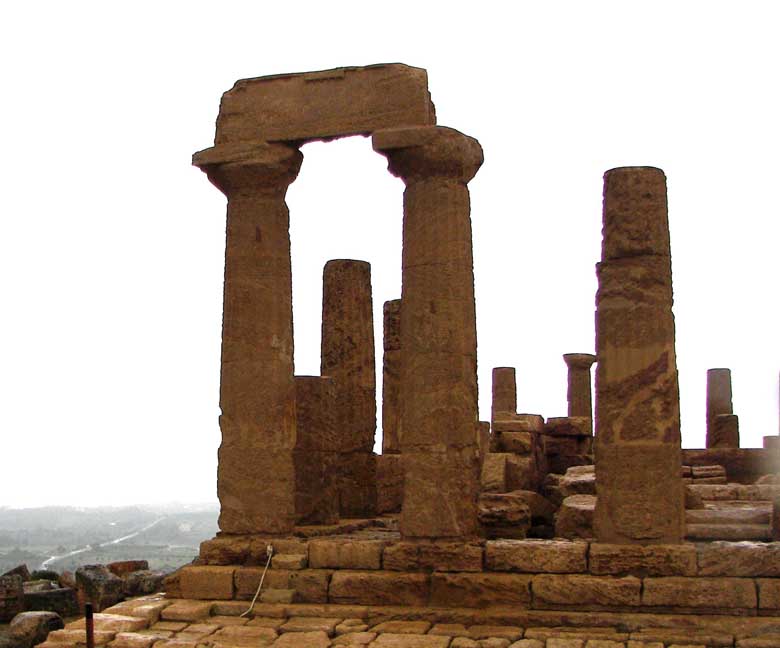 Post-and-lintel system 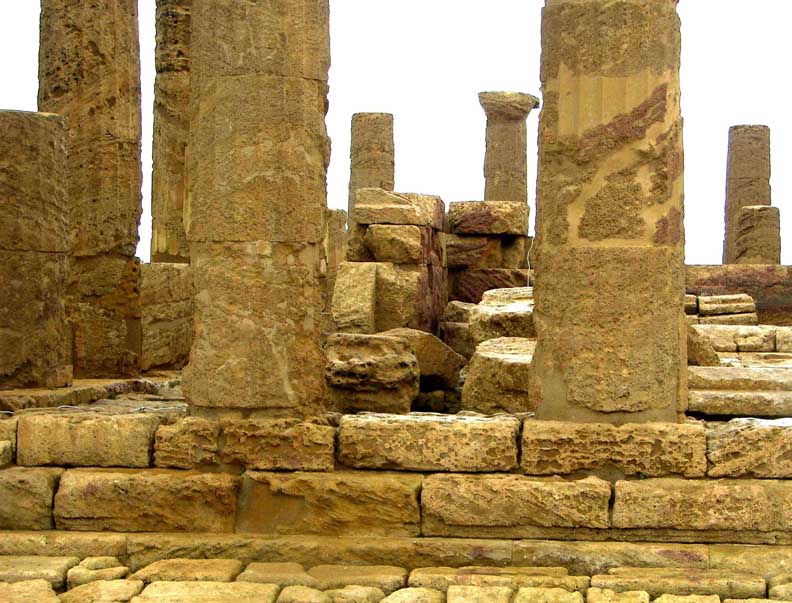 Note how the two columns at left were placed on a slab. Since Doric columns have no base (unlike Greek Ionic and Corinthian columns), the slabs were filler stones placed in between the columns and floor. ... Note also the drums that are vertically placed ... Drums: cylindrical stone blocks composing a column that is not a monolith (large single upright block of stone). 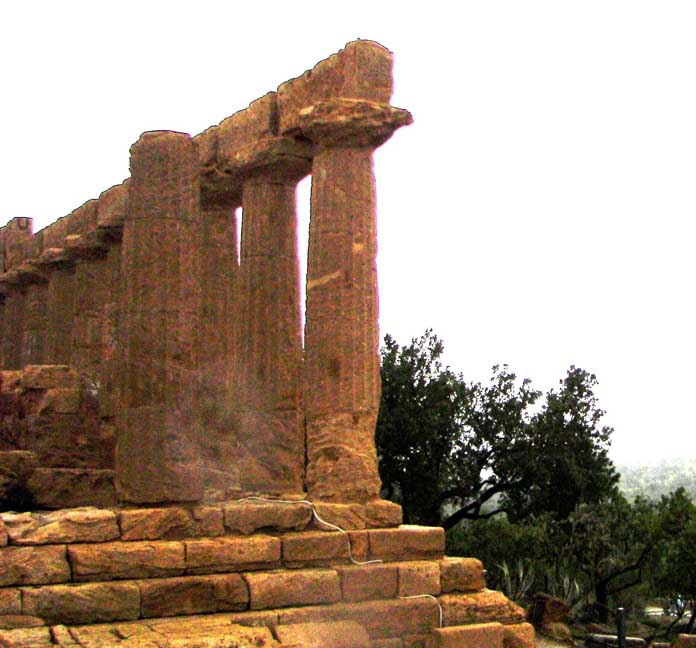 Colonnade with thirteen columns |
Miscellaneous facts:
